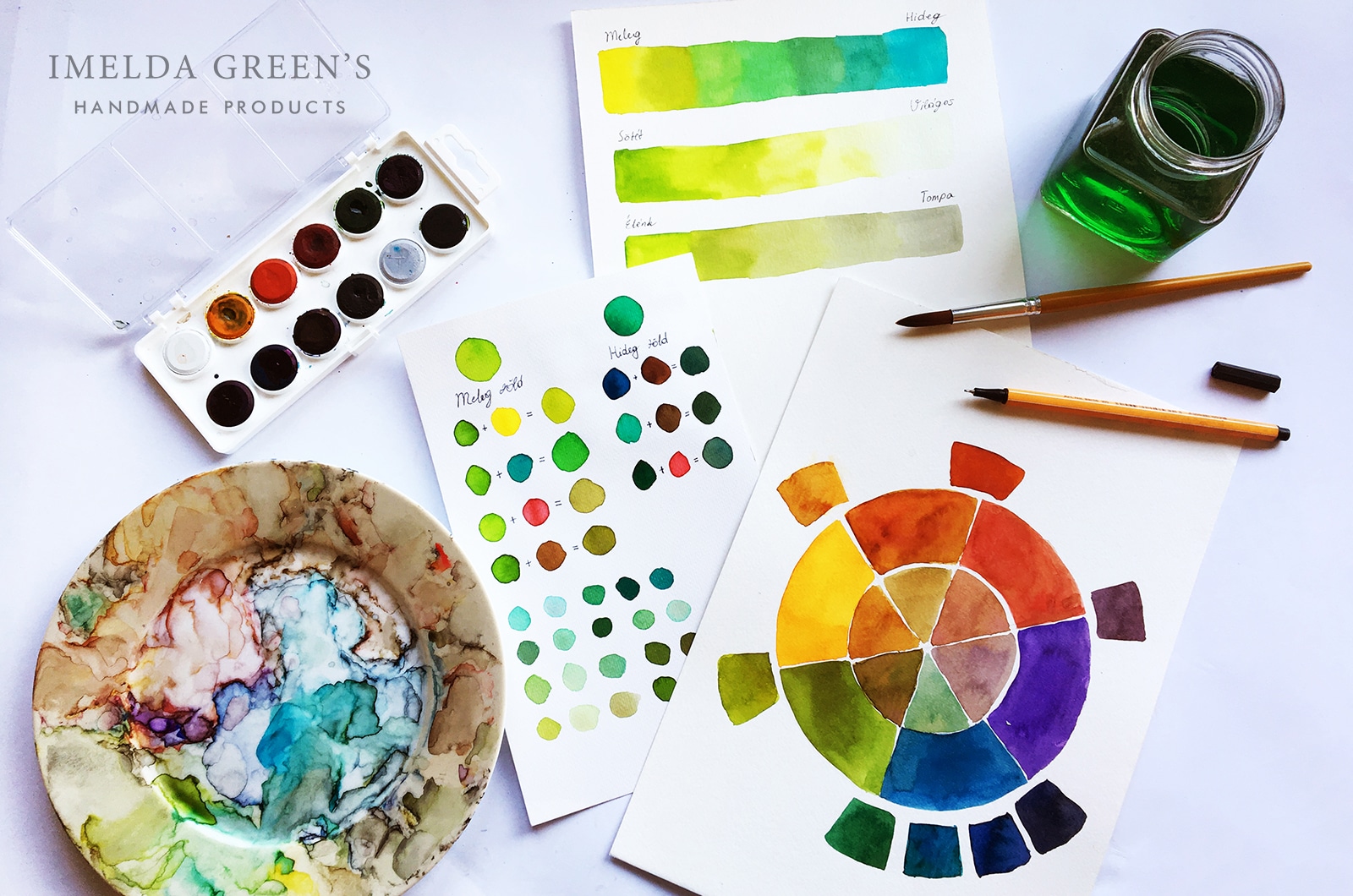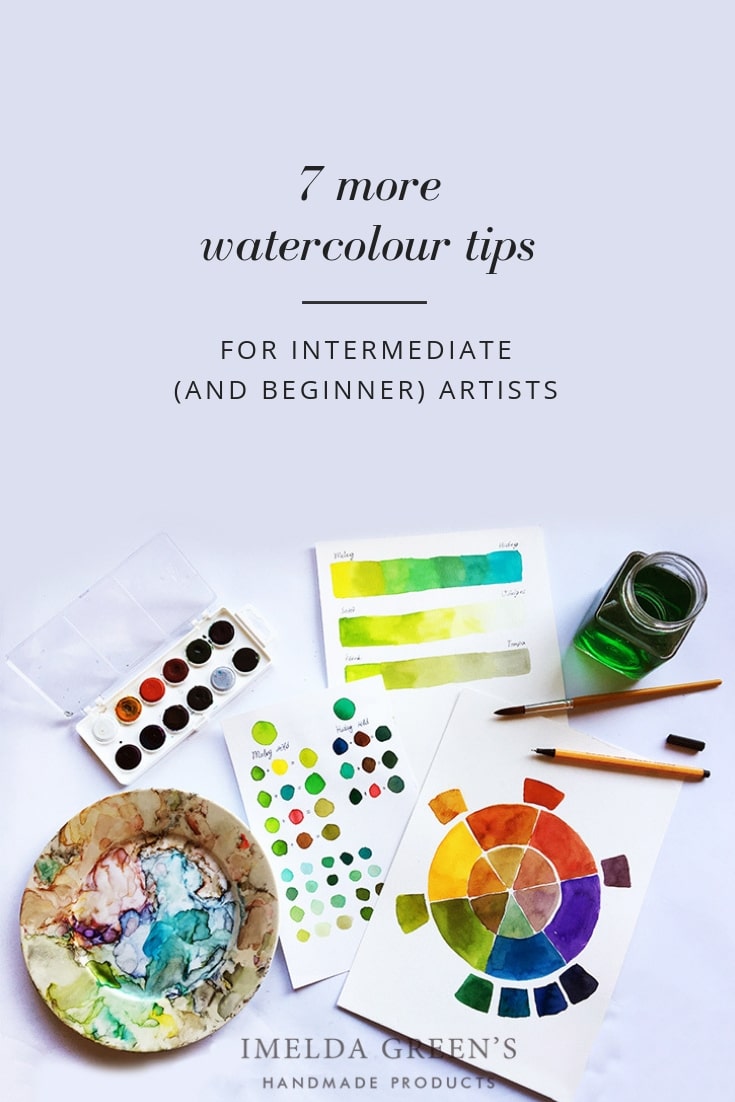
7 more watercolour tips for advanced (and beginner) artists
If you already practice watercolour (or you’ve read the first 7 basic tips :)), you probably have the foundations to create great artwork with this technique. There are a few tricks though, which are rarely mentioned and I only figured them out during my years of practice. I created the list below based on these tricks, which may actually be useful for all colleagues in the visual art, not only watercolourists.
Warm up
Painting is a bit like sport. If you don’t do it regularly, your creative muscles waste away. There are, of course, all the art challenges that inspire you to create daily, but you can’t always fit that into your schedule. So when you pick up your brushes again after only a couple of days break, you already feel rusty. If you have big plans for your next piece, it is especially important to warm up before starting. Everyone has an art comfort zone: topics they have great practice in, so they feel comfortable painting them (in my case it’s plants), so it can be a good warm up exercise. In the worst case, you can also copy stuff – as long as you do it ethically.
Take a break
The feeling when you crouch over a piece for some 3 hours and it’s still only half-finished is priceless. Let’s just get it done and finish it quickly! I think everyone who has ever painted knows this feeling. Watercolour artists are especially endangered, because they wait all the time for the paint to dry, which lengthens the process even more. But think about it: does it matter if you only finish it tomorrow? Is it worth spoiling the entire piece only to have it finished sooner? However difficult it might be, it is usually worth putting aside a half-finished piece, even for as short a time as taking a quick walk. You don’t only breath some fresh air, but also get fresh eyes, which will make you see mistakes much better. (No, in this case you should not tear at your hair, but learn from your mistakes).
Use a limited colour palette
It may be awfully tempting to use all the colours of the rainbow – but to use a cliché: less is more. Again. If you want to create a harmonious (khm.. not cheesy) piece, it is very important that you use colours mindfully. You can work with all the shades of your chosen colours, but it is worth picking 3-4 basic colours, which will dominate your artwork. If you haven’t got enough practice yet, you can always create a swatch on a separate page to see if your colour selection are matching, or it’s only in your head that they look so good together. Many illustrators have incorporated this tip into their style, so they are recognizable through their colour choice – so don’t under-estimate the opportunities that come with a limited colour palette.
Don’t over-work it!
Perfectionist artists are especially prone to finding fault with their pieces all the time. So instead of letting it be, they keep on editing mistakes, until they find the next one. Doubtless, this is part of your development as an artist, but in the case of watercolour – which is a transparent paint – these experiments can often ruin the painting. Just because you finish something quickly, it is not necessarily wrong. Once appropriate colours have blended nicely, there is no need to go over it with a brush again. Watercolour is a technique a little like ballet: it must not be visible how much effort has been put in, otherwise it starts to stink. If you are unsatisfied, it is best to start a new painting. If you are unsure whether the painting is finished, go back to tip No. 2. :)
Make time for experimenting and practicing
This is an uncomfortable truth that many art students hate to hear and tend to avoid. However, 10.000 hours of practice is not a joke. You can learn different techniques and effects in theory, but they will not work unless you practice them. The trick of finding your own style also lies in practice, not developing it in your head. It does not matter if it looks different than how you planned it, the point is that you’ve picked up your brush and left a mark on the paper.
Look in the mirror (or camera)
It is common knowledge that if you look at your artwork for too long, your eyes will not recognize mistakes after a while. The best thing to do is, of course, taking a break, but you don’t always have this option – the deadline might be tight or you may have a limited vacation. In this case, stand in front of a mirror with your painting in hand, or look at the painting through your phone’s camera. Somehow you’ll experience proportions differently, and will notice mistakes that you’d otherwise overlook.
Plan your piece
Another advice that most of my students heartily dislike. :) Unfortunately however, I must stress the importance of planning ahead. It is not my favourite part of the process either, but it is during the sketching process that you (or your client) gets an idea of your painting’s composition and proportions. It is a tough job because it takes time and thinking about, and the result is not particularly spectecular, but at the end of the project you’ll see how worthwhile your efforts have been. What’s more, if you are an inexperienced painter, you’d better plan your colour scheme as well as your composition. Now, the aforementioned stinking may cross your mind, but in fact, this will also enable you to hide the amount of effort that is behind a good watercolour piece.
I hope you found these 7 watercolour tips interesting. If you know anyone who might find them useful, please share this post with them. If you have any questions, just drop me a line or leave a comment down below. :)


